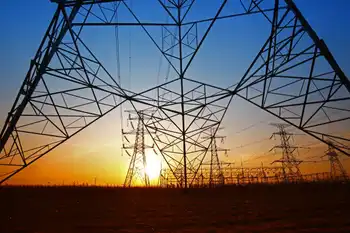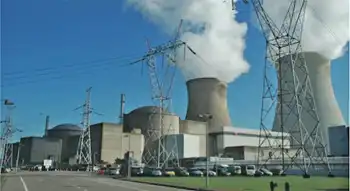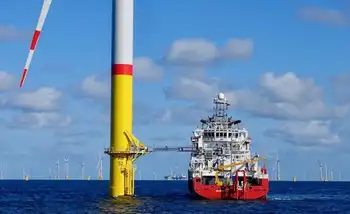Don't get burned investing in solar
By MarketWatch
NFPA 70e Training - Arc Flash
Our customized live online or in‑person group training can be delivered to your staff at your location.

- Live Online
- 6 hours Instructor-led
- Group Training Available
My advice: don't invest in anything solar. That is unless you know, to an extreme, what you are doing.
There are three things that struck me from the Inter-Solar show.
The most impressive was the size of the show itself. It was held in Moscone West, the newest of the convention center facilities and generally used by smaller shows. This was not a small show and for the first time that I've witnessed all three exhibit halls on all three floors of the place were full.
The second thing I noticed was a peculiar phenomenon I have seen within tech trade shows when money is being thrown around like crazy. And that's the used car dealer.
The place was crawling with used car dealers. By that I mean a certain type of glad-handing, big smile, sales guy who is looking to pick your pocket. And when I say crawling with them, I mean crawling. Many were German.
The third thing I observed was the lack of consolidation and overall confusion on the show floor with competing technologies, small-fry with interesting ideas, and China getting into the act at every level.
So here is my advice to investors in solar, specifically solar panels and electricity derived from semiconductor-based technologies. If you do not read Photon Magazine, then avoid the sector.
It's that simple.
That said, there are numerous intriguing speculative opportunities in solar panels. And we have to assume that someday these devices will cost less to manufacture and market than the value of the actual electricity they produce in their lifetime.
With government subsidies panels can be a cost-benefit investment. But it's going to take a while to get to something less that the $2.50 per watt which is the industry average for solar cells. Wind is around $2 or less the last time I checked.
In other words, I have to pay $2,500 for a 1 kilowatt collector device which will continuously deliver 1 kilowatt when the sun is blasting it for the life of the panel, which is about 25-years.
Which brings us to today's stock tip. I have to admit that I am impressed with First Solar Inc. FSLR which didn't bother to exhibit at Inter-Solar and its non-standard thin-film technology that supposedly can deliver the $1-per watt price.
As of this writing, there are essentially eight electricity-generating solar panel technologies led by polycrystalline and monocrystalline silicon modules which dominate the market. First Solar uses a unique technology derived not from a silicon substrate but from cadmium-telluride thin-film.
Cadmium and tellurium are two nasty metals which are hazardous to health. So First Solar has to deal with the question: "What happens if the building catches on fire and the panels are vaporized and people breathe the vapor?"
So First Solar has two challenges. The first is ramping up production. Can it be done? The company says yes. The second is to develop a way to marginalize the risk of the panels vaporizing in a fire.
The company has already addressed the recycling issue with an aggressive recycling program to get these heavy metals out of the garbage dump.
I've been following solar technologies since the 1980s and have always liked the idea of thin-film deposition technology over silicon-crystal-based systems because it doesn't require growing expensive crystals.
That said, the real winner, which is surely on the horizon, is a simple bucket of paint that you can spread over anything and which will collect solar energy and turn it into electricity.
When that comes along, I'm in. Until then, First Solar looks good. But the sector is dangerous.











